Ever heard of Split, Croatia? Could you find it on a map? Split is the second largest city in Croatia sitting on the Adriatic Sea with a population of about 178,000. The city is famous for Diocletian’s Palace built in the 4th century AD. The most interesting thing is that the “Palace” still exists after numerous incarnations and people live in it with shops and restaurants built into it. Split also has a seaport so we’ve see cruise ships (Norwegian, Viking, Princess, and a few we’ve never heard of) almost every day. The itinerary seems to be to dock here in the morning and leave about 6 PM to move to the next port.
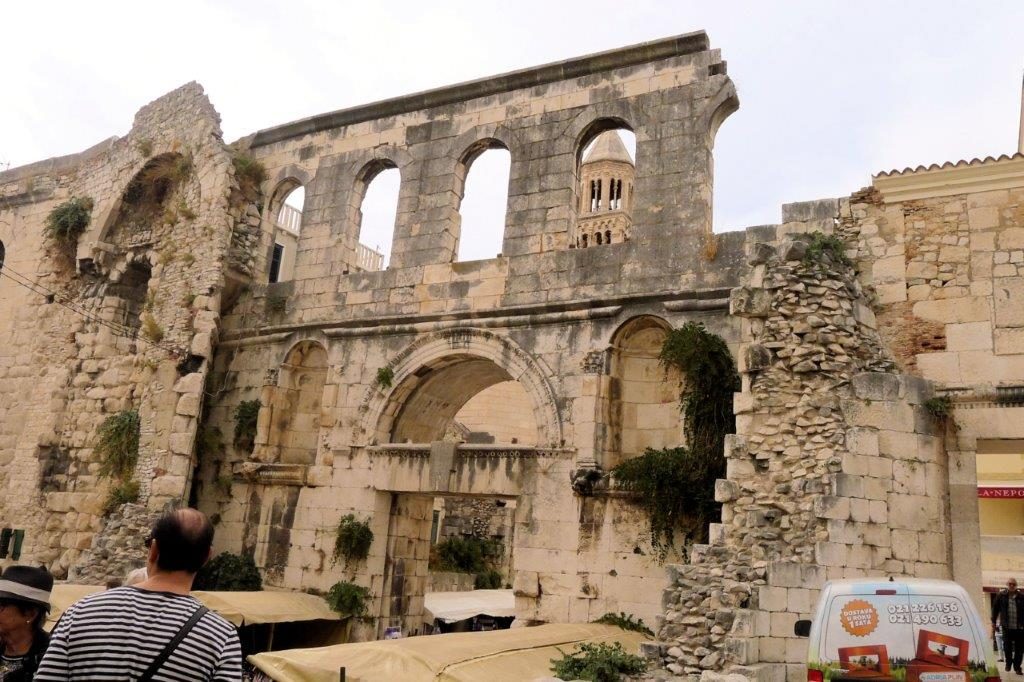
Part of the Diocletian Palace Walls. A few scenes of Game of Thrones were filmed here.
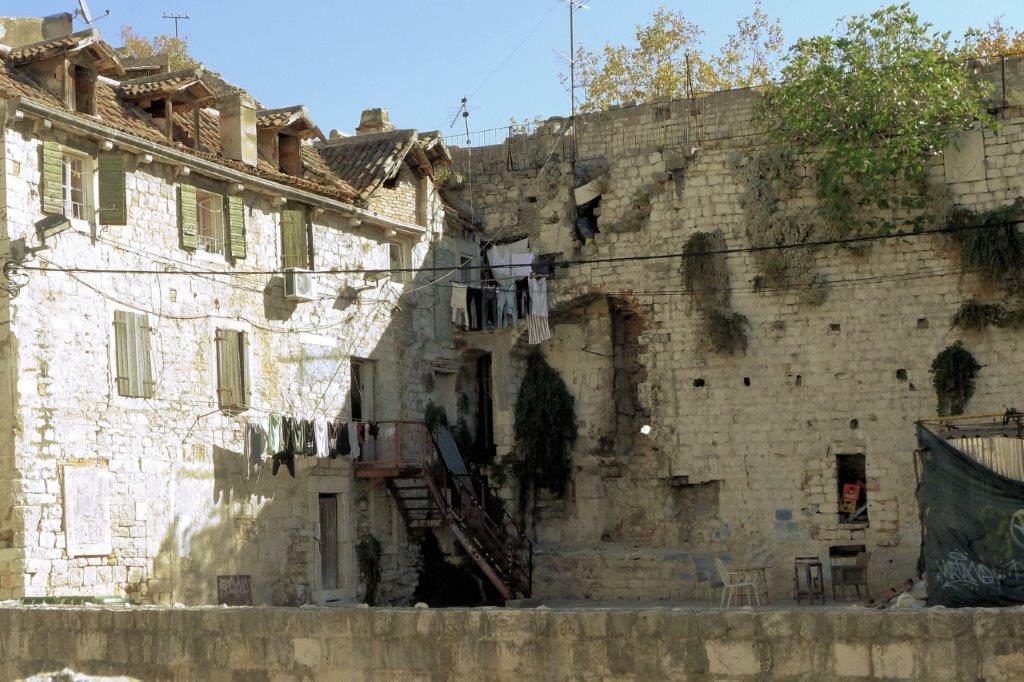
Houses are built into the Old Palace.
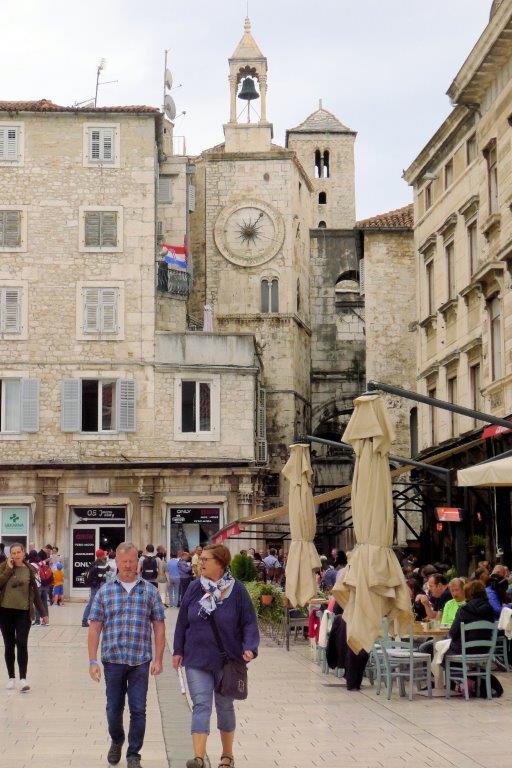
The town square of Split that was part of the Palace at some point.
Beaches are located about 4 blocks from our apartment, ranging from a small beach with sand and very shallow water to rockier ones with deeper water. A walkway goes on for several kilometers with ladders to get out of the water, deck chairs to rent for 50 kuna, bars and coffee bars and night clubs and boat docks. The clubs all seem to be closed now since mid-October is the end of the tourist season.
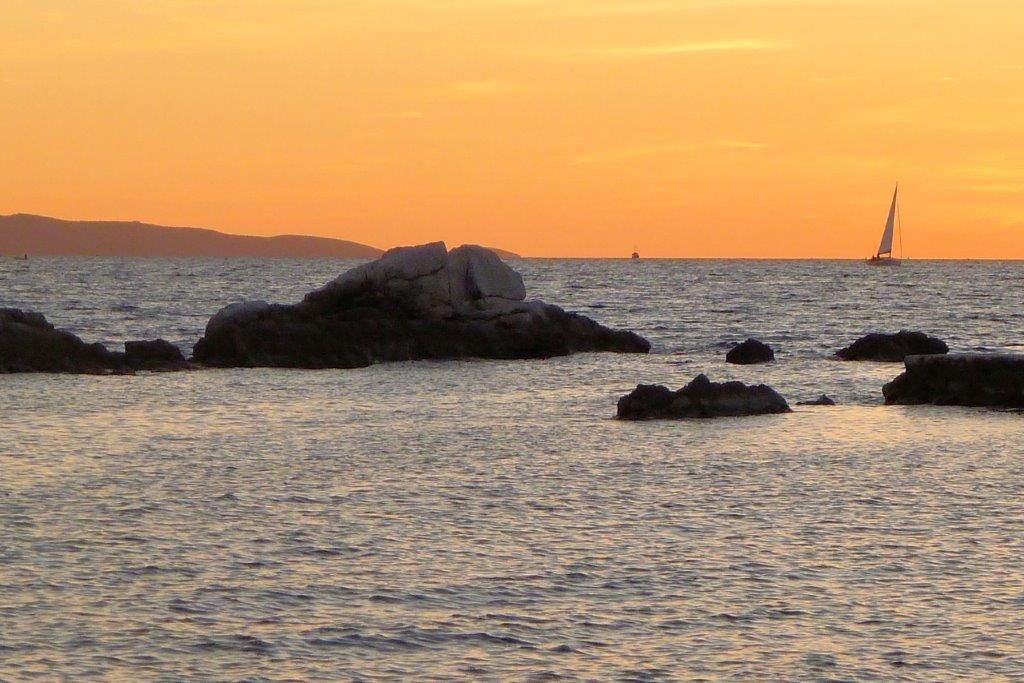
We had beautiful sunsets 14 days in a row.
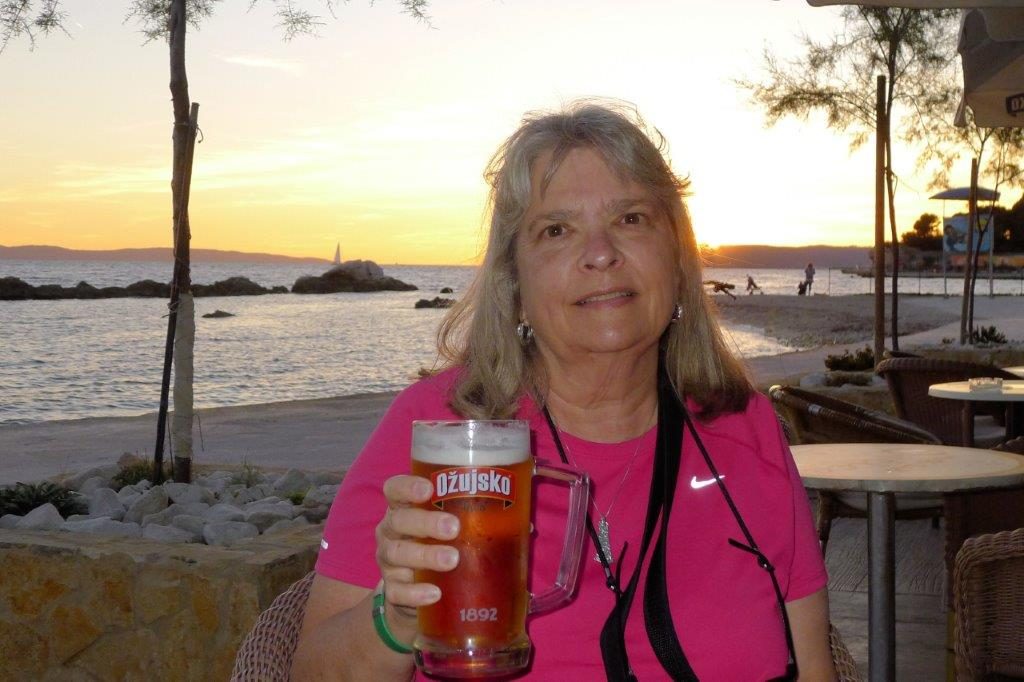
Enjoying a beer with sunset. .5 L beer is about $3 US.
The outdoor bars are wonderful places to have a drink and watch the sunset at night. A Split resident told us Split is like a ghost town when the season is over. Restaurants, shops, and bars close if they cater to the tourists.
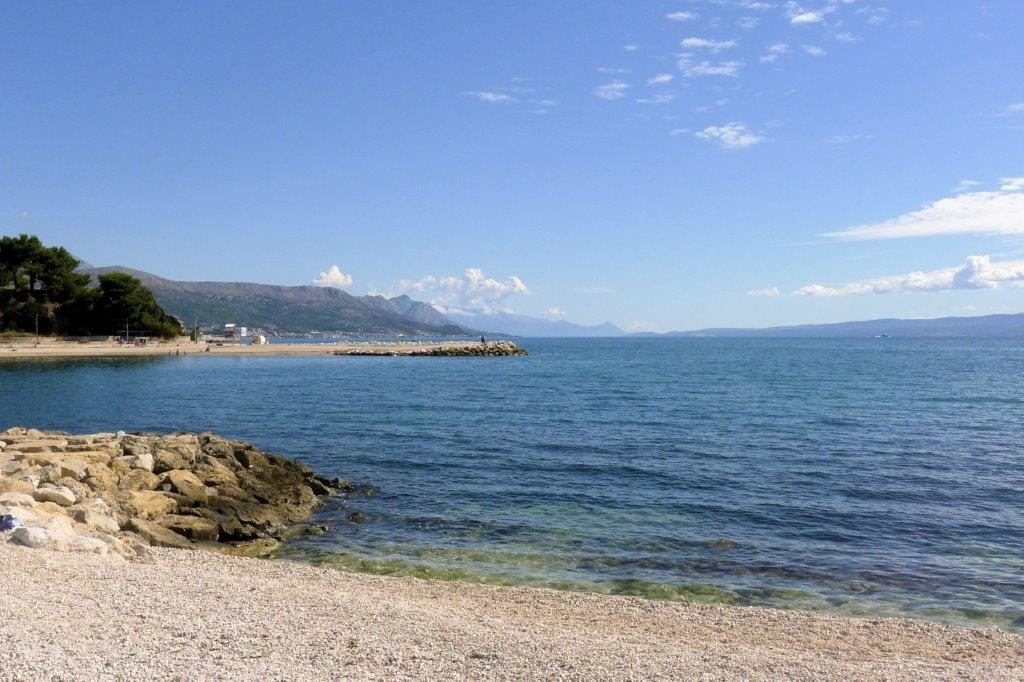
This is one of the many beaches with little pebbles. This is looking south over the Adriatic.
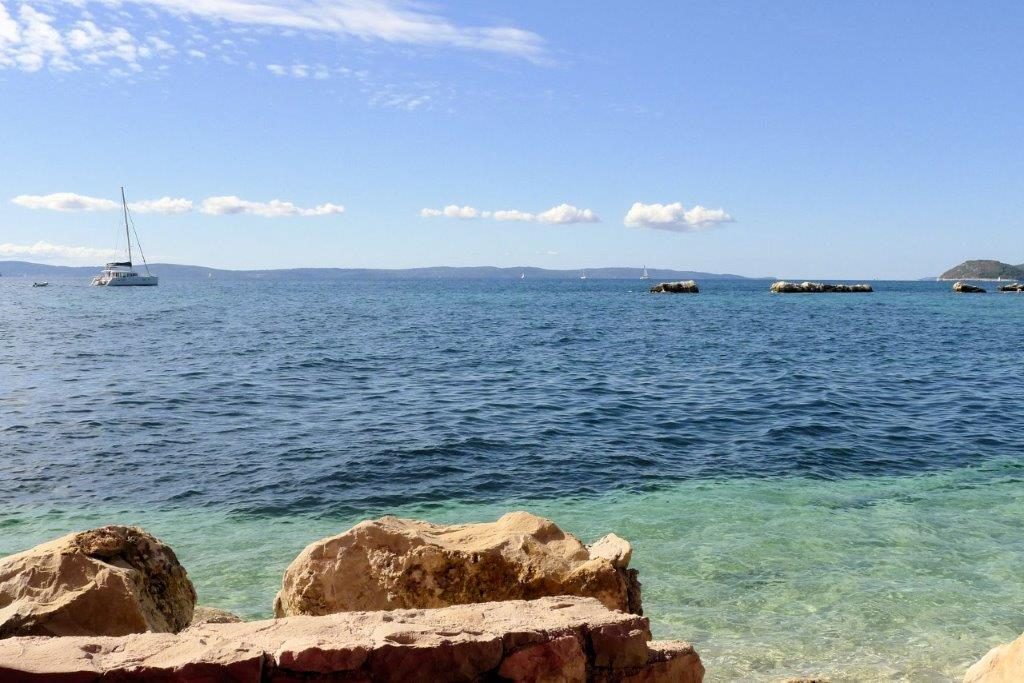
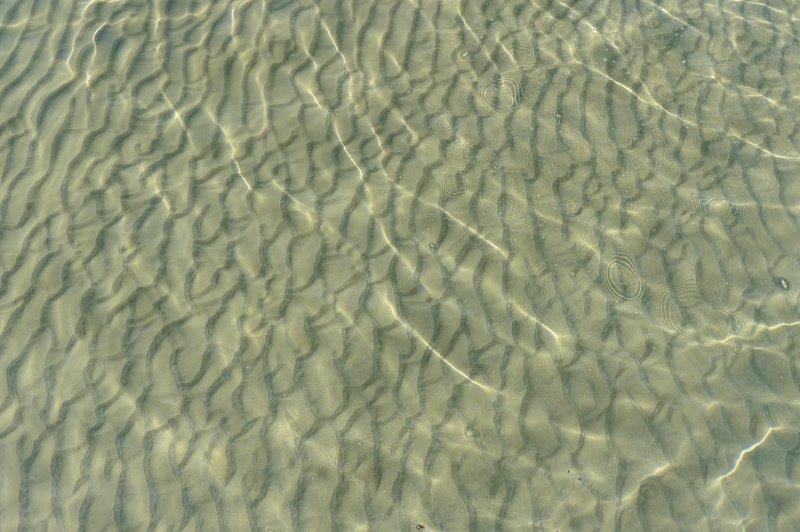
The water is so clear you can see the waves of sand made by the tides.
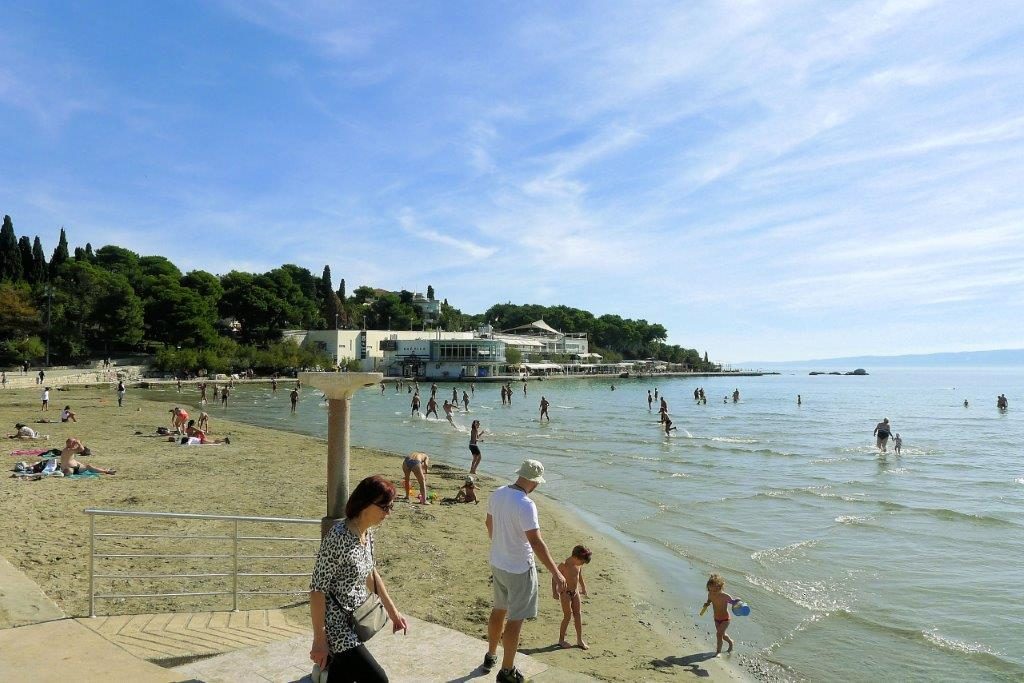
Lots of families were at the beach on Sunday afternoon. It was about 80 F that day. The water at this beach doesn’t get much deeper than about 1 foot or two.
Croatia has about 1246 islands and the clearest water we’ve seen. Ferries – car and passenger – run frequently or at least that’s what it seems to us when we watch them come and go from our apartment balcony. We hear their ferry horns blow , too.
We visit the green market almost every day to shop with the Croatians. Besides veggies and fruits, there’s plenty of honey, cheese, butchers, etc. One of the cheese guys recognizes us now since we buy all our cheese from him. One store seems to specialize in chicken and what appears to be turkeys, based on the size of the legs for sale. They sell some great smoked turkey – our go-to lunch meat.
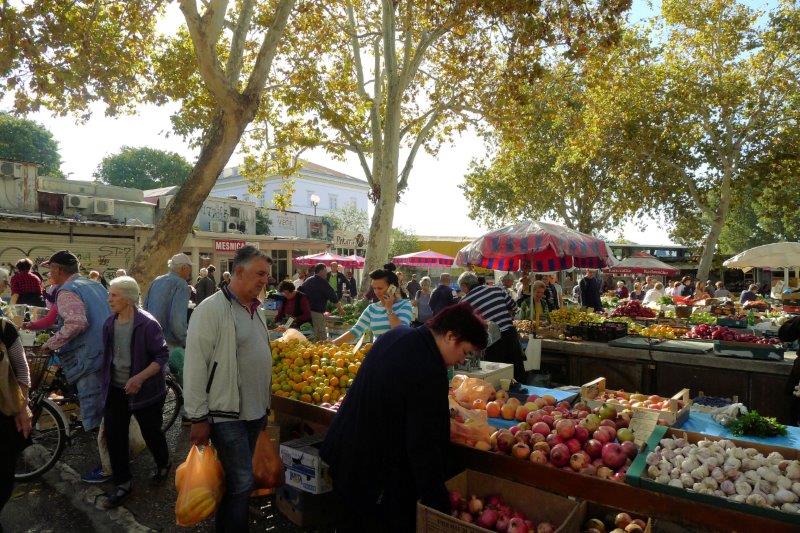
The Green Market in the old city. Lots of fruits, veggies, olive oil, meat, cheese, olives.
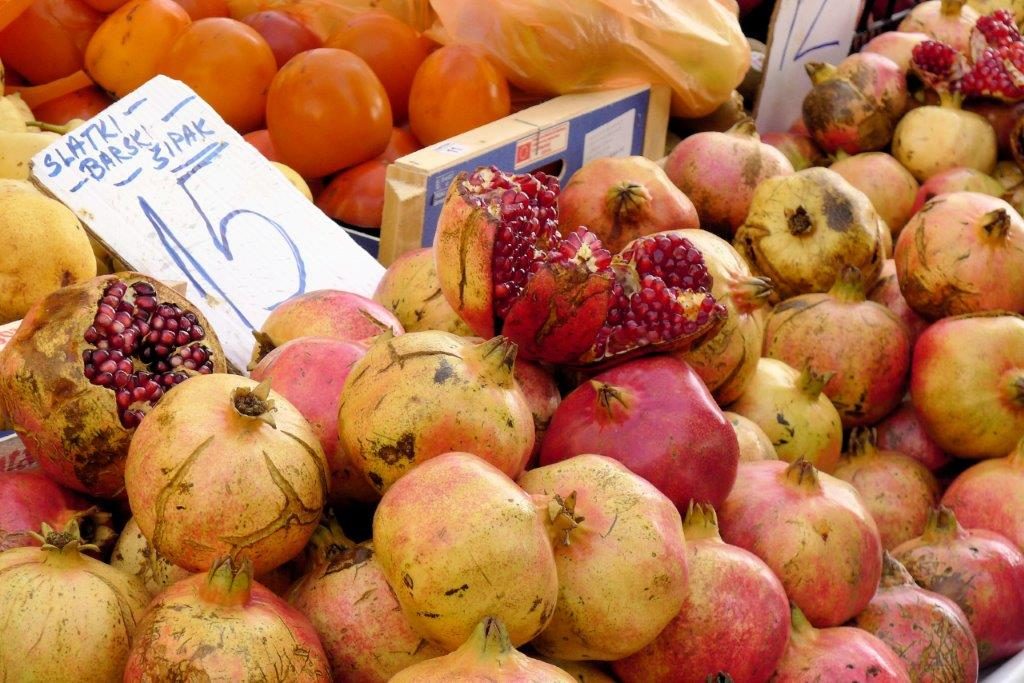
Pomegranates for sale in the market are about $2 US per kilo or $1 US per pound, roughly
After our daily trip to the market, it’s coffee time! Drinking coffee for 2 hours seems to be a well-developed sport in Croatia, one that we haven’t quite mastered yet although we can hang out for about an hour, watching people. Prices for coffee and beer vary by location with the neighborhood shops being the cheapest, followed closely by the beach prices. Highest prices are in the center of the old city. Yes, we made this a research project. It’s amazing how we think a difference of 4 kuna is a big deal when it’s only about 60 cents US.
We took an all-day boat trip to Blue Cave and 5 other islands with Space Fun. Spectacular scenery and water! The 10 passengers were an international collection – French, Mexican, Finnish and American. The crew was great and kept us busy for 10 hours. The longest part of the day was the first 1.5 hours to get from Split to Blue Cave, running amidst ferries, sail boats, speed boats, etc. I’ll do a separate post of the day trip or this will get too long!
By the way, UP is the operative word in Split. Streets are connected by steps as well as sloped streets. Some of the streets are just for people, bikes, scooters while others allow cars, too. Speaking of cars … the streets in the old town are REALLY narrow – think 2 lanes if the cars are small and people park on 2 sides of the street in between metal posts, concrete barricades, etc. On our street, cars have to back out the length of the street to get to the next street to get out. There’s no place to turn around.
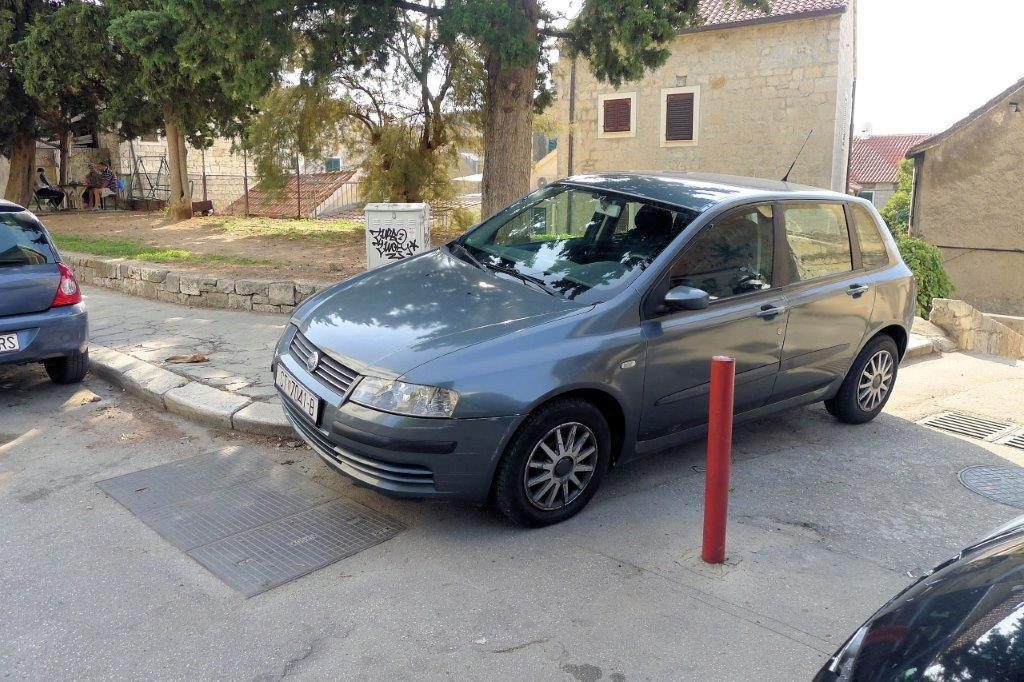
The barricades were to stop people from parking by the steps. Obviously, this does not apply to this car!
I think the Split residents do the best job of parallel parking I’ve ever seen. I’d fail miserably! We frequently see 1 car parked behind 2 cars who have parked perpendicular to the curb. The car who has everyone blocked puts a note in the window with a phone number to call if the the blocked cars want out!
We walked up to Marjan forest park three times so far using the steps. I counted – there are 248 steps to connect the seaside with the first observation point. We walked further UP into the park and, being the geeks we are, calculated the average grade was about 6% on the walk. I knew that geometry and trig would come in handy! Our third trip UP we took a different route ended up using a different set of steps – still UP!
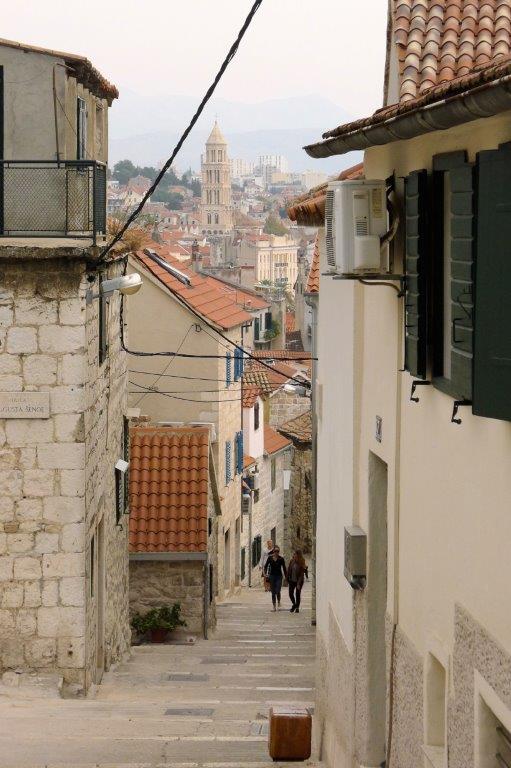
These steps wander between the houses to get up to Marjan Hill. You can see the Diocletian tower in the distance.
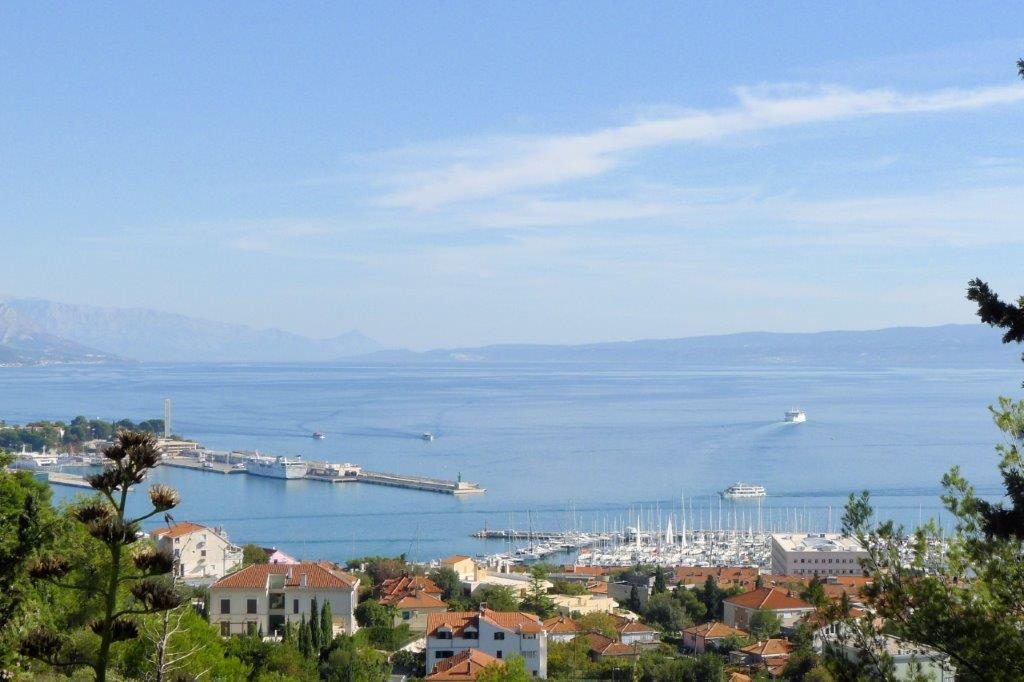
View of the Split harbor from the lowest observation point on Marjan Hill
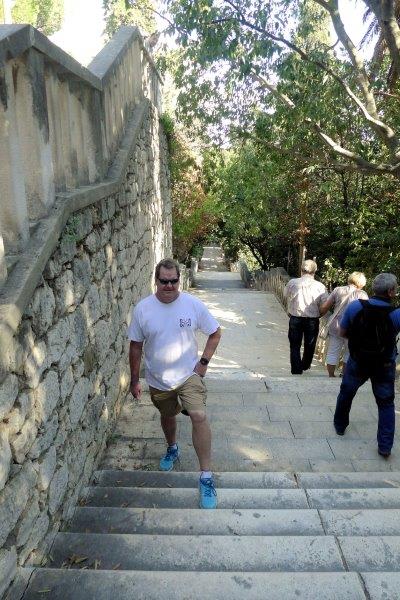
Mark gives you some perspective of the steps – all 248 of them!
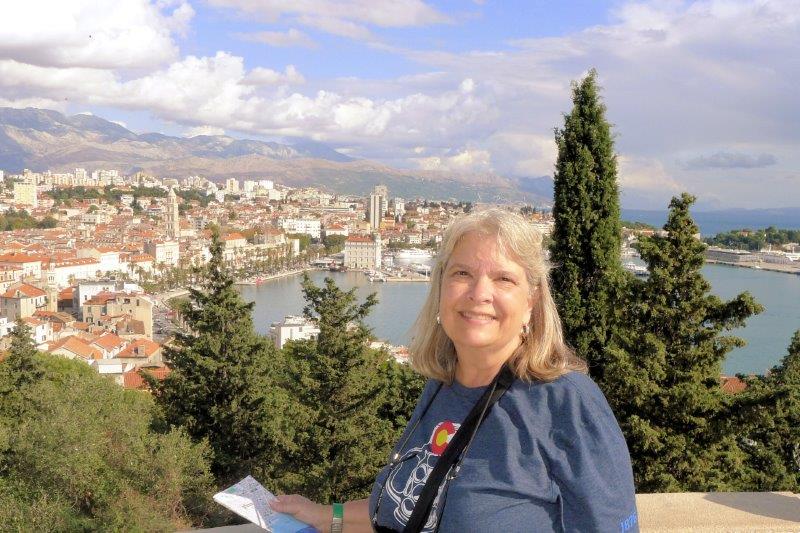
Looking down on the Old City
We asked what the tennis racquet on a building we see every day is all about and found out that Goran Ivanisevic grew up in that house.
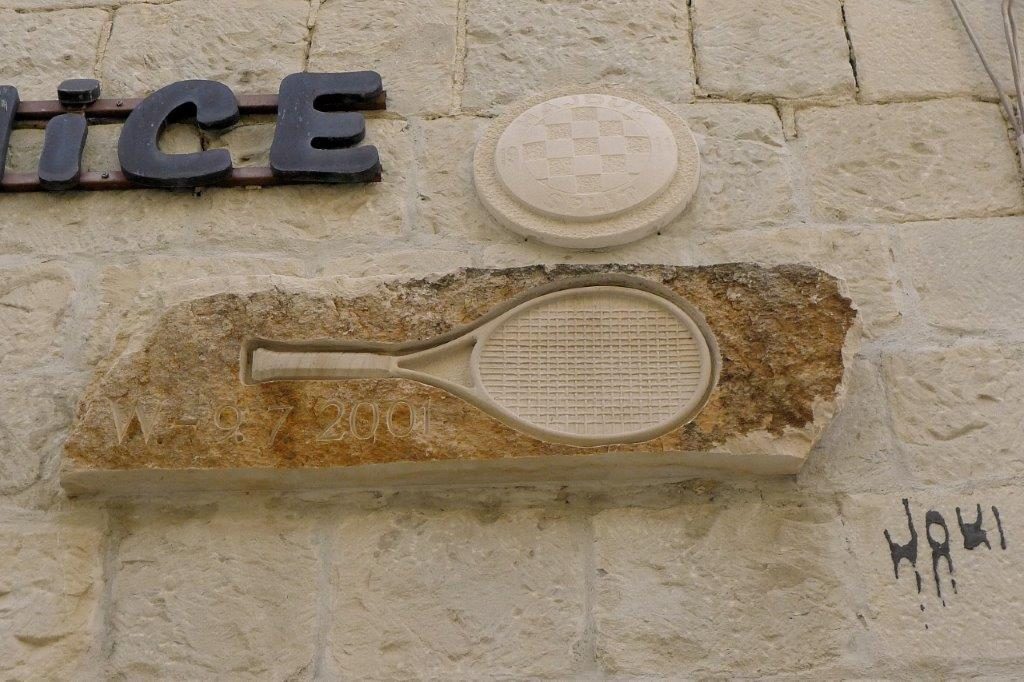
Plaque has the date Goran Ivanicevic became the only unseeded player to win Wimbledon. He also played soccer for the Split team.
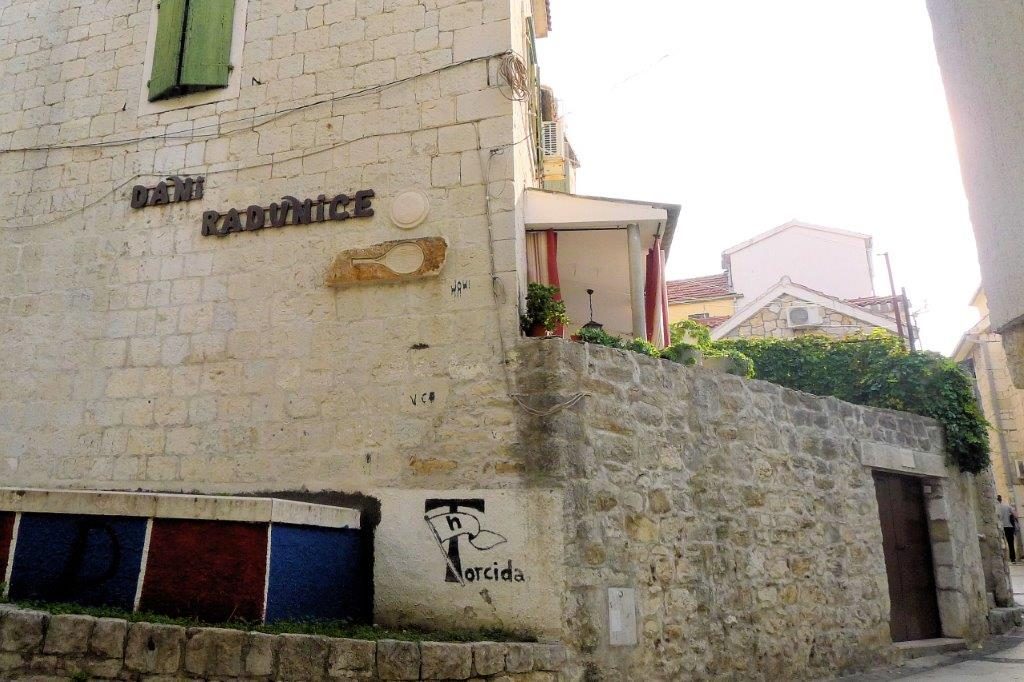
The house where Goran Ivanicevic grew up, down the street from where we’re staying.

Very interesting. My parents came from Croatia, although not from Split. They came from the other side of the mountains inland (Lika area). Everything looks so old-worldly and quaint, but it took centuries to look that way. Betty Jo put me on to this website, and I shall follow you around the world.